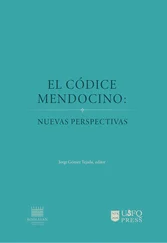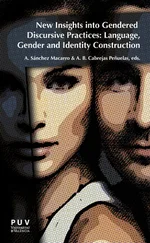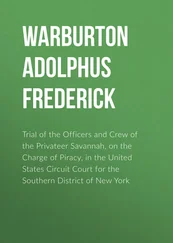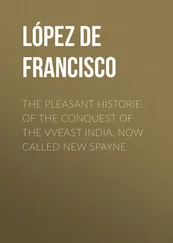Black and red inks in alphabetic writing
The black ink used for alphabetic writing (measured on all the selected pages) shows an elemental profile with iron as the main element and with variable amounts of zinc and manganese. This combination clearly indicates the use of an iron gall ink, a material of European origin often found in colonial Mesoamerican manuscripts. In some instances, gall ink was used to add small details to the pictorial imagery, such as on folio 63r, where it was detected on the tip of the spear of the young warrior on the left. Gall ink was also detected in the Spanish gloss of the year signs on folio 1v, previously thought to have been traced with lamp black.
The results obtained from the red color used in the Nahuatl gloss of the same calendric signs on page 1v were more unexpected, given that it was previously thought that it was composed of minium (Gómez Tejada 2012, 88). Elemental analysis combined with UV-Vis spectroscopy allowed for the straightforward identification of cinnabar (HgS). The use of cinnabar (also known as “vermillion”) as a colonial painting material is not unique since it was also used on the Codex Florentinus (Giorgi, Chelazzi, and Magaloni Kerpel 2014, 165) and the Beinecke Map (Magaloni Kerpel 2012, 83; Newman and Derrick 2012, 96); however, this is the first time that it has been proved that cinnabar was used as a writing material.
Black and grey
The black frame lines and the black areas within the images of the Codex Mendoza (measured on all the selected pages) are all made of a vegetable-derived carbon black (apart from the abovementioned small corrections with gall ink). Vegetal carbon black (known as “tlilli” or “tlilliocotl” in Nahuatl) is the only material that our analyses showed to be truly pan-Mesoamerican, since it was identified in all the manuscripts measured thus far (Domenici et al. 2014; Dupey García 2015, 152–53; 2016). Most grey areas in the Codex Mendoza were simply painted with a diluted form of carbon black. The only exception to the pattern so far described was detected in the smoke volutes on the lower left part of folio 63r, where lead was detected; this is the only point in the painted imagery where a non-traditional Mesoamerican material was detected. Since this lead grey was identified in a single point in the whole manuscript, it is difficult to say if it was a common color in the painters’ palette or if it represents a unique occurrence.
In various instances, carbon black was superimposed over a pink color, especially to paint the pinkish-grey flesh of people: our measurement on such pink-grey areas (folio 63r: body of upper left figure; folio 64r: body of the porter, or tlamemeh, in the upper register, and the leg of the lower right warrior) showed the presence of cochineal, which was consistent with other pink areas in the manuscript (see below). Calcium carbonate or tizatl (not detected in purely grey areas), which was probably used to lighten the color, was also detected. The superimposition of a grey layer over the pink color of the skin of some individuals is interesting, since a similar practice is observed in other Mesoamerican paintings, such as the victorious warriors of the Battle Mural at Cacaxtla (Brittenham and Magaloni Kerpel 2017, 67–70) or some of the individuals portrayed in the Chihk Nahb murals in Calakmul (Brittenham, personal communication; P. Baglioni and R. Giorgi, personal communication). This technique is probably intended to reproduce the black body paint applied over the skin, as also noted by Gómez Tejada (2012, 107).
Red and pink
An insect-derived anthraquinone lake pigment has been detected in all the red areas of the painted figures (folio 2r: lower left shield; folio 37r: right warrior’s cap and shield; folio 63r: teponaztli holder; and folio 64r: mantle of lower right warrior) by means of UV-Vis reflectance and emission spectroscopy. The same anthraquinone lake pigment was also used to paint pink areas, both in a lighter and a darker hue (folio 63r: ladle censer and folio 64r: border of the central mantle in the third register). Considering the historical period and the geographical origin of the codex, cochineal is the most likely insect source of this pigment. The use of cochineal as a codex painting material has been detected in most of analyzed codices (Domenici et al. 2017) and it is clearly reported in historical sources, in which it is called tlapalli. Tlacuahuac tlapalli could be the name of a cochineal lake, while terms such as tlapalnextli and camopalli seem to refer to specific chromatic variants of cochineal lakes (Dupey García 2009; 2015, 153; 2016).
Although frequently negligible, an increase of potassium related to the paper support was detected. This increase may possibly be due to the thinness of the painting layer and, tentatively, can be associated with the practice of making lake pigments by adding potash alum (AlK(SO4)2∙12H2O); these are well-documented in European pigment recipes (Kirby, Spring, and Higgitt 2005) and also reported in pre-Columbian historical references (Dupey García 2015, 153; 2016). As previously noted, this cochineal-based painting material seems to have been quite liquid, since it bleeds through the paper sheet more than any other color in the manuscript.
Yellows, oranges, and browns
Two different types of yellow compounds have been found in the Codex Mendoza. The first is arsenic-based, as indicated by XRF performed on some yellow areas (folio 2r: central shield and Tenoch’s icpalli and folio 37r: headdress of the left warrior, gourd, and mat box). The compound is most probably orpiment (As2S3), as identified by Raman spectroscopy in other codices (Buti et al. 2018; Domenici et al. 2017; Brunetti et al. 2016) The second yellow (foli 63r: astronomer’s seat and woman’s face in third register and folio 64r: costume of the central lower warrior) is an organic dye; we concluded it was organic in these areas because XRF analysis did not reveal any key element characteristic of inorganic pigments. Neither XRF nor FTIR provided indication of an inorganic support for the dye: XRF analyses showed a negligible amount of potassium (although this could be due to the low layer thickness) and FTIR showed the absence of any infrared signal of clay, although the hindering effect of the cellulosic support cannot be overlooked. These observations suggest that the organic color was not used in these areas as a lake pigment or as a hybrid pigment (Buti 2012; Domenici et al. 2017).
Unfortunately, it is not easy to distinguish orpiment from the yellow dye with simple naked-eye observation, since the color hues of the two painting materials seem to overlap (especially in the lighter yellow hues); these similarities are probably related to specific painting techniques such as different dilutions, etc. Nevertheless, the darker hue of the warrior’s costume in the lower register of folio 64r seems to be characteristic of the yellow dye. While the use of orpiment is not recorded in any colonial historical source, various organic yellows/oranges are mentioned with names that probably refer both to the organic dye and to the lake from which it was obtained. Zacatlaxcalli was a yellow obtained from Cuscuta sp. plants, while xochipalli was a more orange tint obtained from Cosmos sulphureus (Dupey García 2015, 254; 2016). Zacatlaxcalli is a likely source of the non-orpiment yellow of the Codex Mendoza, as previously suggested by Gómez Tejada.
In the brownish/orangeish areas on folio 37r (cuexcómatl) and folio 63r (teponaztli), XRF analysis and UV-Vis reflection indicated the presence of an iron-based pigment, possibly rich in goethite. XRF also showed a higher signal of arsenic in these same areas (and of manganese only on folio 63r), but it is not clear if this indicates that the ochre was mixed with orpiment or if arsenic naturally occurred within the ochre.
Читать дальше












